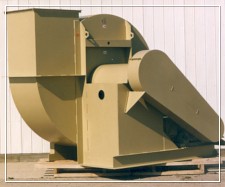 Troubleshoot your way out of industrial exhauster performance troubles
Troubleshoot your way out of industrial exhauster performance troubles
August 29, 2014 REDWIRE is news you can use from leading suppliers. Powered by FRASERS.
Posted by N.R. Murphy Limited
Since 1943, we have Experience In Custom Manufacturing Dust Collection Systems And Related Equipment. Also Includes: Cus... Read more
Subscribe
Free REDWIRE e-newsletter

Breathe a sigh of relief knowing industrial exhausters help to provide a continuous flow of clean air when you enter a commercial building.
Inside the walls of an industrial plant or warehouse facility, industrial exhausters stream a constant flow of either air or gas to perform many processes, depending on the type of industry the system serves.
An industrial exhaust is simply either a fan or blower propelling large amounts of air or gas flow to perform certain commercial or industrial functions, such as cooling, heating or ventilating applications, to the transport of exhaust, particles or vapours.
When industrial exhausters function in top form, the world is a happy place. But when exhauster performance takes a nose dive, the clouds set in and the skies become grey.
But, don’t fear, this article is here: take time to troubleshoot possible causes of exhauster malfunctioning with solutions to make everything alright with the world again.
Air disappears into, well, thin air – insufficient air flow
Check the filters or inlet and outlet screens for possible debris clogging or soiling the system. Or verify the exhauster wheel is not rotating in the wrong direction.
Also, ascertain whether the system resistance is higher than the maximum operation limits designed for the industrial exhauster.
Another possible area to look into is the proper functioning of the duct elbows near the exhauster inlet or outlet.
Or when it blows too much hot air – excessive air flow
A probable culprit is the exhauster speed is set too high, far surpassing the maximum operating speed limits of the exhauster. Alternatively, improper installation or adjustments of blast gates or dampers are likely candidates of unwarranted air flow.
When the exhauster becomes exhausted – inoperative exhauster
When the exhauster lights go out, suss out whether the exhauster has blown a fuse or two. Some other causes are an improper size motor or incorrect motor voltage and wiring. One more solution is to tighten loose sheaves or belts.
The exhauster engine is an industrial workhorse – excessive horsepower draw
While the idea of exhauster engine horsepower performing as a mechanical workhorse sounds tempting, excessive horsepower draw overheats the system with too much power, which cuts the service life of the exhauster. Stick to the old adage of steady wins the race.
Conduct an audit of the exhauster gas density to gauge if it’s too high. The next option is to determine static pressure levels, which may be less than anticipated.
When the exhauster gets the shakes – excessive vibration
Time to play doctor and detective at once: a proper diagnosis of extreme vibration, a common symptom of exhauster instability, is caused by a host of reasons, including:
- Accumulated material on exhauster wheel
- Loose or worn out bearings or mounting bolts
- Exhauster wheel or sheaves not tight enough on the shaft
- Lack of cross-braced structure on the exhauster
- Belts too close or too tight
Need a second opinion? Contact N. R. Murphy Limited directly so we help you narrow down and pinpoint the exact aliment to your specific exhauster.
Share
Posted by N.R. Murphy Limited
Since 1943, we have Experience In Custom Manufacturing Dust Collection Systems And Related Equipment. Also Includes: Cus... Read more
